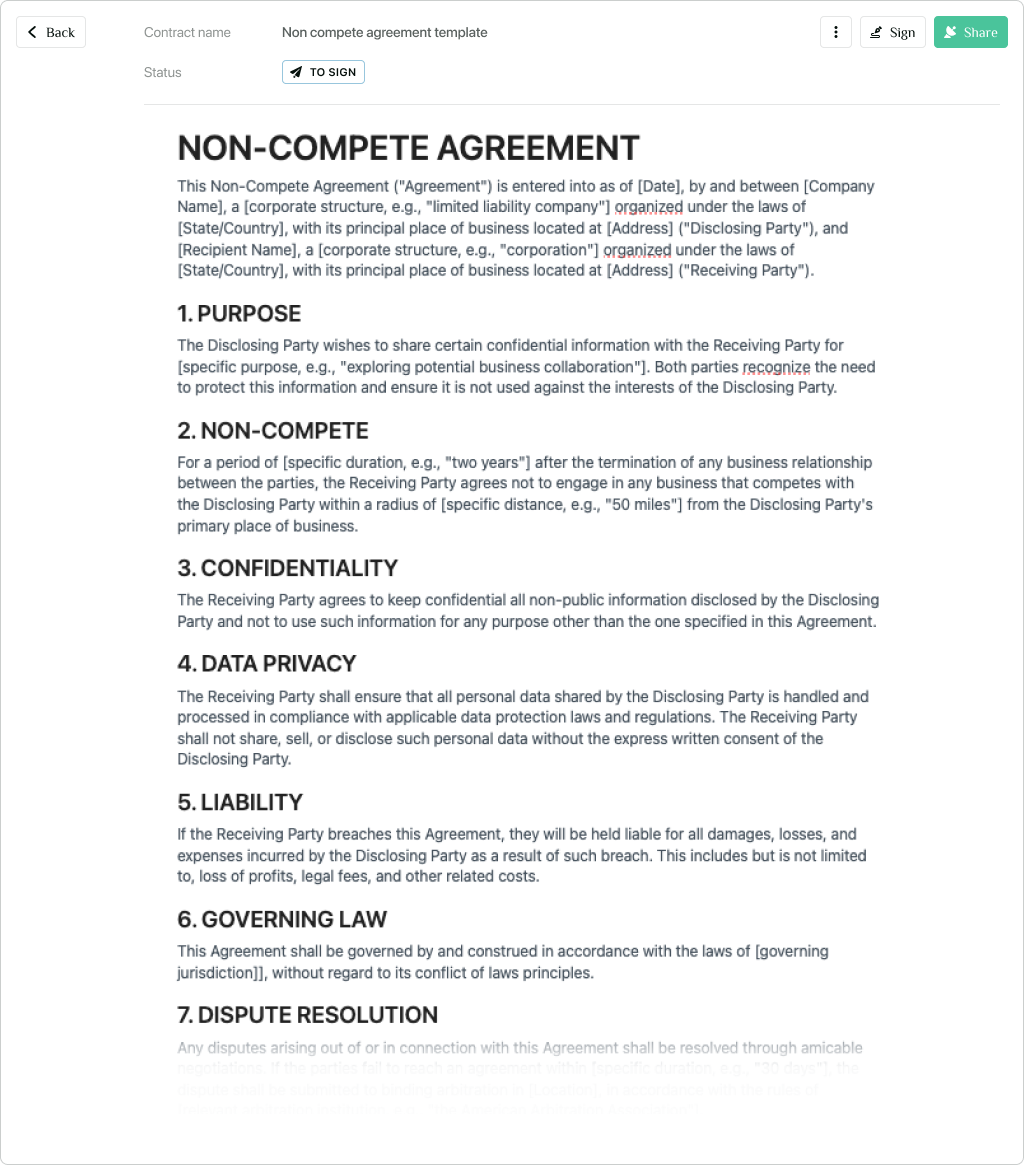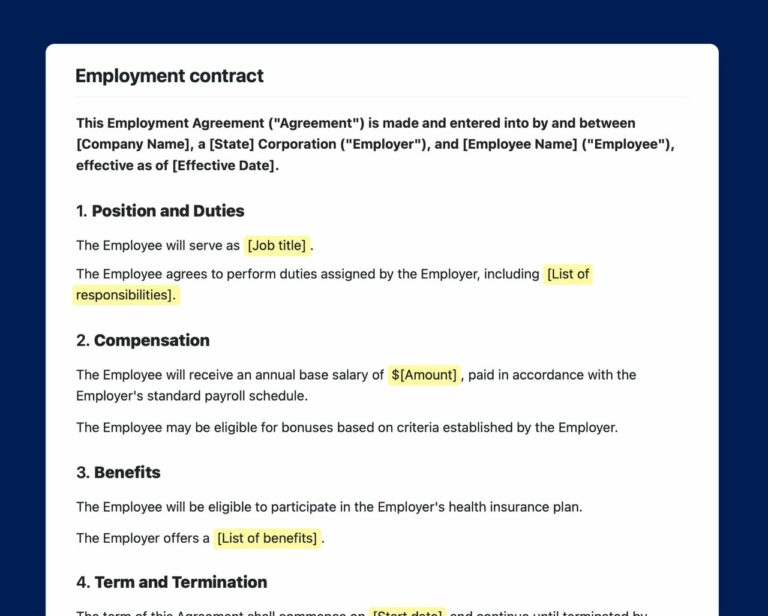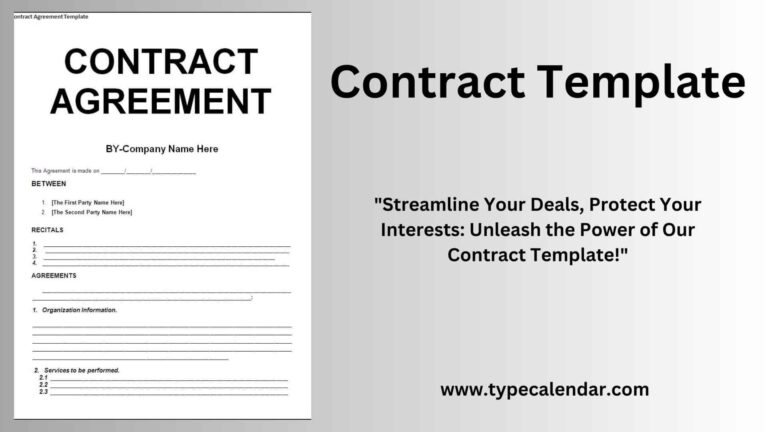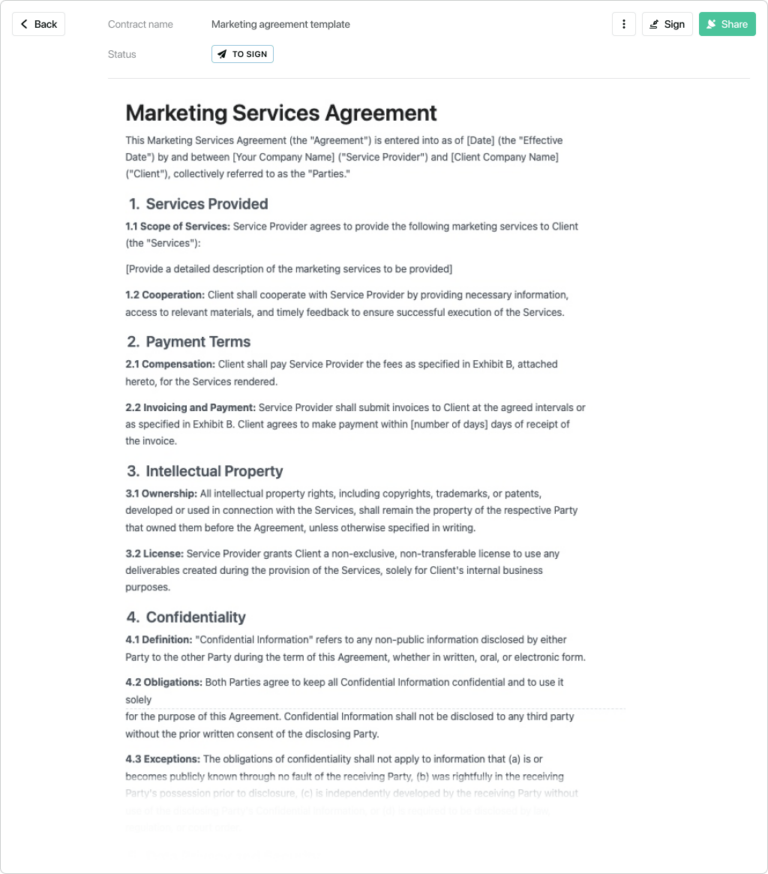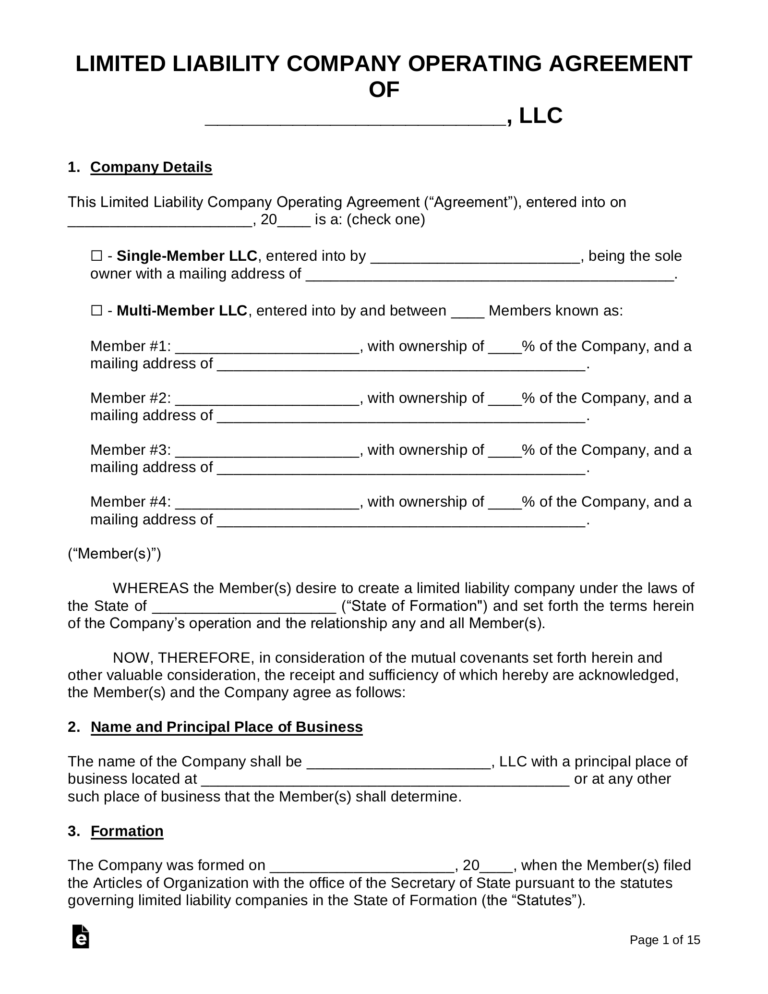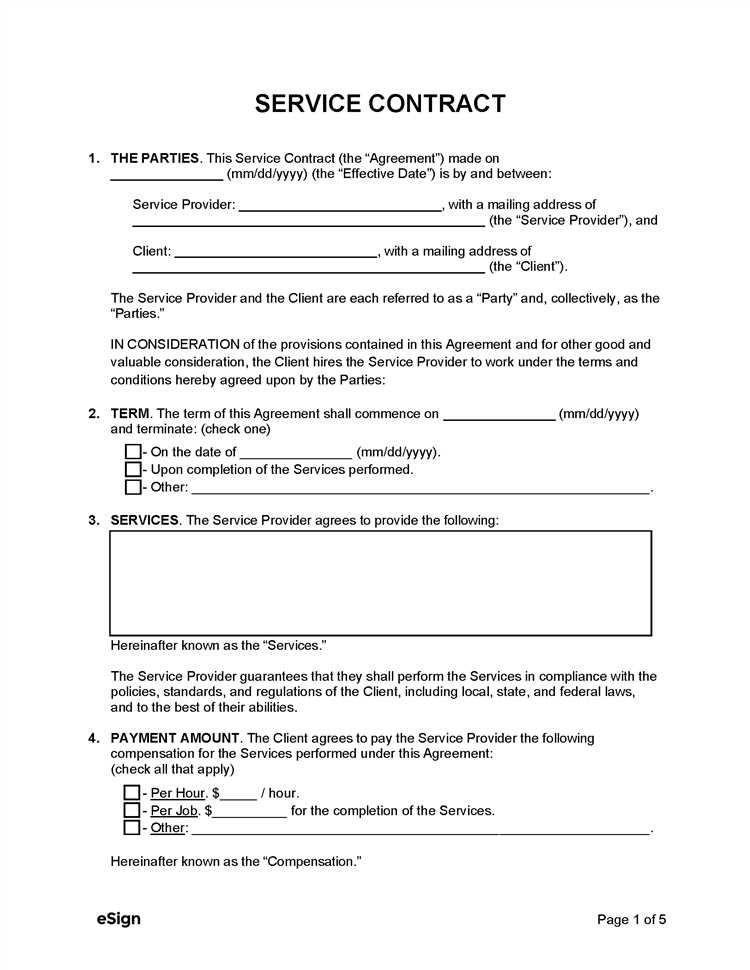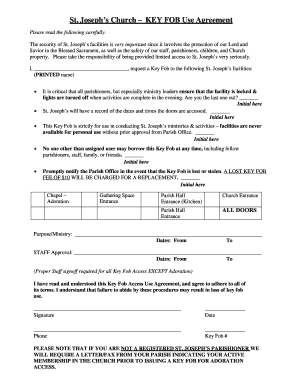Non Compete Agreement Templates: A Comprehensive Guide
In the dynamic world of business, protecting your company’s confidential information and trade secrets is paramount. Non-compete agreements serve as a crucial tool to safeguard these valuable assets, preventing employees from leveraging sensitive knowledge to the detriment of your organization. This comprehensive guide will delve into the intricacies of non-compete agreement templates, empowering you with the knowledge to create and implement effective agreements that protect your business interests.
Non-compete agreements are legally binding contracts that restrict an employee’s ability to work for a competing organization or engage in activities that conflict with their former employer’s business interests. They are particularly important in industries where proprietary information and customer relationships are critical to success. By understanding the different types of non-compete agreement templates available, the key elements they should include, and the legal implications of their use, you can ensure that your business is adequately protected.
Non-Compete Agreement Template Overview
Non-compete agreements are legal contracts that restrict employees from working for a competing business or starting their own competing business after leaving their current employment. They are commonly used to protect an employer’s confidential information, trade secrets, and customer relationships.
Having a well-drafted non-compete agreement is essential to ensure that it is enforceable and will provide the necessary protection to the employer. A well-drafted agreement will clearly define the scope of the restriction, the geographic area covered, and the duration of the restriction.
Key Elements of a Non-Compete Agreement
The key elements of a non-compete agreement include:
- Identification of the parties
- Definition of the restricted activities
- Geographic scope of the restriction
- Duration of the restriction
- Exceptions to the restriction
- Consideration for the agreement
Types of Non-Compete Agreement Templates
Non-compete agreement templates come in various flavours, each with its own set of pros and cons. Here’s a quick lowdown on the main types:
Broad Non-Compete Agreement Template
These templates cast a wide net, barring you from working in any similar field or with any competitor for a set period.
- Advantages: Offer maximum protection for employers, especially in industries with sensitive trade secrets or customer lists.
- Disadvantages: Can be overly restrictive, potentially stifling your career growth and making it difficult to find new employment.
Narrow Non-Compete Agreement Template
These templates are more targeted, limiting your activities to specific geographic areas, job titles, or types of work.
- Advantages: More balanced approach, providing reasonable protection for employers while allowing you some flexibility in your career.
- Disadvantages: May not provide sufficient protection for employers in highly competitive industries.
Non-Disclosure Agreement Template
These templates focus on protecting confidential information rather than restricting your employment options.
- Advantages: Less restrictive than non-compete agreements, allowing you to continue working in the same field while safeguarding sensitive information.
- Disadvantages: May not provide the same level of protection for employers as non-compete agreements.
Creating a Non-Compete Agreement Template
Creating a non-compete agreement template can be a bit of a hassle, but it’s worth it in the long run. A well-drafted non-compete agreement can protect your business from unfair competition and help you retain your valuable employees.
Here’s a step-by-step guide to creating a non-compete agreement template:
1. Start with a strong foundation. The first step is to gather all of the necessary information, including the names of the parties involved, the purpose of the agreement, and the specific terms of the non-compete.
2. Define the scope of the non-compete. The non-compete should clearly define the activities that the employee is prohibited from engaging in. This includes the geographic scope of the non-compete, the time period during which the non-compete is in effect, and the specific activities that are prohibited.
3. Consider the reasonableness of the non-compete. The non-compete must be reasonable in order to be enforceable. This means that the non-compete must not be overly broad or restrictive. It must also be tailored to the specific needs of the business.
4. Get it in writing. Once you have drafted the non-compete agreement, it is important to get it in writing. The non-compete agreement should be signed by both parties and should be witnessed by a notary public.
Best Practices for Drafting Non-Compete Agreements
Here are some best practices for drafting non-compete agreements:
* Use clear and concise language. The non-compete agreement should be easy to understand and should not contain any ambiguous language.
* Be specific. The non-compete agreement should clearly define the activities that the employee is prohibited from engaging in.
* Be reasonable. The non-compete agreement must be reasonable in order to be enforceable. This means that the non-compete must not be overly broad or restrictive.
* Get it in writing. The non-compete agreement should be signed by both parties and should be witnessed by a notary public.
Tips for Avoiding Common Pitfalls
Here are some tips for avoiding common pitfalls when drafting non-compete agreements:
* Don’t make the non-compete too broad. The non-compete should only prohibit the employee from engaging in activities that are directly related to the business.
* Don’t make the non-compete too long. The non-compete should only be in effect for a reasonable period of time.
* Don’t make the non-compete too restrictive. The non-compete should not prevent the employee from earning a living.
Customizing Non-Compete Agreement Templates
Customizing non-compete agreement templates is essential to ensure they meet the specific needs of your business. Several factors need to be considered when customizing these templates, including:
– The industry in which your business operates
– The specific role of the employee
– The geographical area to be covered
– The duration of the non-compete agreement
Once you have considered these factors, you can begin to customize the template. Here are some common customization options:
– Adding or removing specific clauses
– Modifying the language of the template
– Adding or removing specific definitions
– Adding or removing specific examples
By customizing the template, you can create a non-compete agreement that is tailored to your specific needs. This will help to protect your business from unfair competition and ensure that your employees are not violating their obligations.
Additional Factors to Consider
In addition to the factors listed above, there are a few other things to keep in mind when customizing non-compete agreement templates:
– The enforceability of the agreement
– The potential impact on the employee
– The cost of enforcing the agreement
It is important to remember that non-compete agreements are only enforceable if they are reasonable. This means that the agreement must not be overly broad or restrictive. It must also be supported by a legitimate business interest.
The potential impact on the employee is also important to consider. Non-compete agreements can have a significant impact on an employee’s ability to earn a living. It is important to make sure that the agreement is not so restrictive that it prevents the employee from finding a new job.
Finally, the cost of enforcing the agreement should be considered. Non-compete agreements can be expensive to enforce. It is important to make sure that the potential benefits of the agreement outweigh the costs of enforcement.
Using Non-Compete Agreement Templates
Using non-compete agreement templates can be a savvy move to protect your biz, but it’s crucial to use ’em wisely. These templates provide a solid foundation, but remember, each sitch is unique, so tweak ’em to fit your specific needs.
Legal Implications
Non-compete agreements are legally binding, but the law varies across different regions. Make sure you’re clued up on the specific laws in your area to avoid any nasty surprises.
Best Practices
To make the most of your non-compete agreement, follow these top tips:
- Be reasonable: Don’t go overboard with restrictions. Only include clauses that are essential for protecting your biz.
- Get it in writing: A verbal agreement ain’t worth the paper it’s not written on. Make sure you have a signed, written contract.
- Seek legal advice: If you’re not sure about anything, don’t hesitate to consult a lawyer. They’ll help you draft an agreement that’s legally sound.
Enforcing Non-Compete Agreement Templates
Enforcing non-compete agreement templates involves taking legal action against an individual or entity that has breached the terms of the agreement. This can be a complex and time-consuming process, but it is often necessary to protect the legitimate business interests of the employer.
There are several legal remedies available for breach of non-compete agreements, including:
*
Injunctions
Injunctions are court orders that prohibit the individual or entity from engaging in activities that violate the non-compete agreement. Injunctions can be temporary or permanent, and they can be very effective in preventing further breaches of the agreement.
*
Damages
Damages are monetary awards that compensate the employer for the losses they have suffered as a result of the breach of the non-compete agreement. Damages can be difficult to calculate, but they can be substantial in cases where the breach has caused significant harm to the employer’s business.
*
Specific performance
Specific performance is a court order that requires the individual or entity to perform the obligations that they agreed to in the non-compete agreement. This remedy is only available in certain circumstances, but it can be very effective in enforcing the terms of the agreement.
FAQ Corner
What are the key elements of a non-compete agreement?
The key elements include: a clear definition of restricted activities, a reasonable geographic scope, a reasonable time period, and consideration for the employee.
What are the different types of non-compete agreement templates?
There are various types, including general non-compete agreements, specific non-compete agreements, and non-solicitation agreements.
How can I customize a non-compete agreement template?
Customization involves tailoring the template to fit your specific industry, business needs, and employee role.
What are the legal implications of using non-compete agreements?
Non-compete agreements must comply with applicable laws and be reasonable in scope to be legally enforceable.
